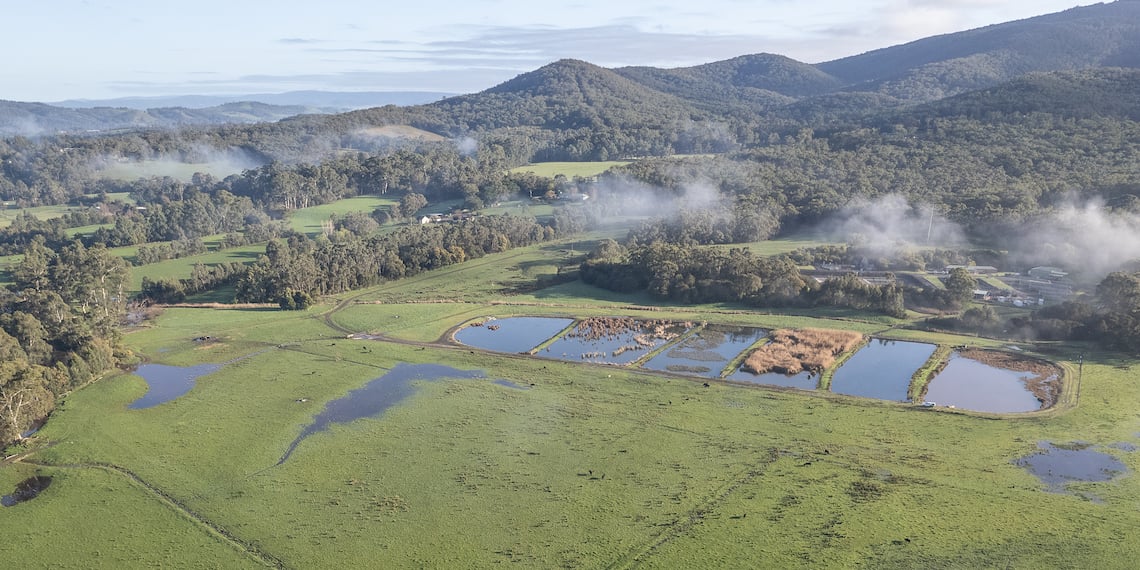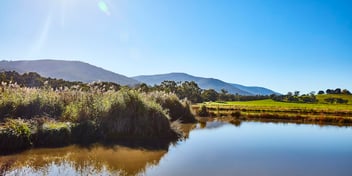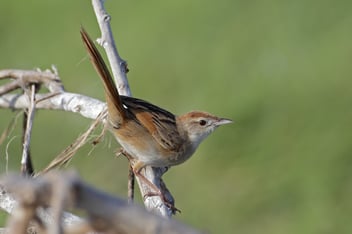Utility leads habitat creation to support endangered species

Two of Victoria’s faunal emblems are now listed as critically endangered – the Helmeted Honeyeater and the lowland Leadbeater’s Possum – but a new partnership is using recycled water to create more than 35 hectares of climate resilient habitat.
With guidance from the Narrap Rangers, Yarra Valley Water is partnering with Zoos Victoria, Greening Australia, Melbourne Water, Jacobs and Spiire to restore biodiversity at its Upper Yarra Sewage Treatment Plant site in support of these endangered species.
There are approximately only 230 Helmeted Honeyeaters and 24 lowland Leadbeater’s Possums left in the wild. Both species are endemic to Victoria.
The Upper Yarra site was once part of a vast swamp forest and the traditional home of the small songbird and tiny marsupial, said Natalie Hackett, Senior Engineer, Place Based Planning and Resilience at Yarra Valley Water.
“These species are critically endangered because of habitat loss through land clearing and degradation from bushfires. But we have a unique opportunity to help protect them,” she said.
“Through collaborations with environmental organisations, Traditional Owner partners and other stakeholders, we are taking significant steps towards creating a secure habitat for these endangered species.”
Hackett said the remaining wild populations of the two species are found in lowland swamp forest vegetation communities, all of which depend on the presence of water at varying intervals and depths.
“The new habitat will feature a mixture of woodland and wetland environments, utilising recycled water from the treatment plant to ensure the animals and the swampy habitat they rely on can thrive under a changing climate,” she said.
Greening Australia Science Lead Dr Elizabeth Pryde said the project demonstrates the opportunities that can be unlocked when diverse stakeholders come together to help nature.
“As one of Australia’s leading restoration organisations, we’re thrilled to bring Greening Australia’s experience and expertise to this unique and exciting opportunity to create a vital rewilding site for Victoria’s two critically endangered faunal emblems and to meaningfully contribute to reducing their risk of extinction,” she said.
“Rebuilding nature is no simple task. The option to integrate recycled water produced at the site into the project will allow swamp forest habitat to be restored and enhance its ability to withstand prolonged dry periods under a changing climate.
“This is a pioneering approach to recreating habitat and exemplifies the kinds of innovative approaches that we can and must take to tackle the environmental challenges we collectively face.”
Habitat cities
While creating wildlife corridors is one way of supporting biodiversity, Hackett said that in this instance, a new habitat needs to be created, as the remaining wild populations are confined at the Yellingbo Conservation Reserve.
“One of the key reasons why the site is so well positioned to create a habitat for these species is that it’s located in an area of the Yarra Valley that was once home to the swamp habitat, which was the natural home of these two species,” she said.
“Back in 2019, Greening Australia identified that reach of the Yarra River where the Upper Treatment Plant site is located as an area of high habitat restoration potential. These species are endemic to this small region of Victoria, and remaining wild populations are confined to the Yellingbo Conservation Reserve just 10 kilometres away from our site.”
Hackett said having only one location to live negatively impacts genetic diversity, and that the plan is to build a new habitat city for both species and create a whole new population.
“For a long time, recovery teams have looked at providing corridors for species along the riparian waterways. But they’re pivoting their strategy now and looking for larger areas that they can restore. They’re taking a city rather than a highway approach,” she said.
“One thing about their confinement at the current location is a lack of genetic diversity, which is one of the risks of extinction beyond habitat clearing. That’s why establishing new populations is important.”
Water for habitat
Creating successful, resilient habitats relies on hydrology, Hackett said: “The habitat will thrive and support the animals best if we get the hydrology right”.
This is where Yarra Valley Water’s abundant supply of recycled water comes in.
“One of the features of all treatment plant sites, particularly Yarra Valley Water’s site, is a large land holding, but also abundant recycled water,” Hackett said.
“We engaged Greening Australia to assess the feasibility of restoring habitat at the site. Their findings were that it was very favourable, including the typography, the climate, the position within the landscape, and the proximity to the other habitat location of the species. The site is also big enough to support a distinct population.”
Hackett said one of the things that is so exciting about creating the new habitat and population on the Yarra Valley Water site is the availability of recycled water in the face of a warming climate.
“Zoos Victoria spent a long time looking for a site featuring a good dense eucalyptus forest with dense understory. They found that very few of these sites exist anymore in lowland areas and we need to focus on recreating them and engineering new habitats,” she said.
“The restoration will consist of a mix of woodland and wetland habitats. Some will be permanently sustained by recycled water, but the more ephemeral wetlands will be supplied with surface water.
“But during times of drought, when surface water flows are not available, we are designing the system so that recycled water can take that place.”
Partnering for resilience
The alternative source of water for the habitat is key to creating a climate resilient home for the two species, Hackett said.
“Wildlife supports ecosystems, which humans rely on. Keeping biodiverse systems intact helps us as humans. It’s a key ingredient to the climate change solution,” she said.
“Resilience is all about diversity of plants and water sources. While we are targeting these two species, we want to enhance the biodiversity for all the flora and fauna on our site.
“We have just done some eDNA sampling of the site to give us a good feel for what’s there now. We will then be able to embed that eDNA sampling overtime to verify the improvements we see in biodiversity.”
Hackett said that while Yarra Valley Water is playing a significant role in the project, partnering with other key expertise has been absolutely crucial to getting this work off the ground.
“While we are managing the delivery and establishment, we are not experts in ecology or ecosystem restoration. The partnership element of this project is really important. We have to be guided and helped by our partners to learn how to care for this habitat over time,” she said.
“The partnership with Zoos Victoria is a long term partnership. Ultimately, they will bring their operations onto our site, which is super exciting. Our treatment plant team is thrilled at the idea of having Zoos Victoria working alongside them.”
Once the site is planted out, Yarra Valley Water intends to hand management of the habitat over to the Wurundjeri Woi-wurrung Land Management Unit.
“They have the experience, but also the deep, personal connection to the land and investment in seeing it thrive. While we haven’t established that partnership fully yet, we are actively working towards it,” Hackett said.



